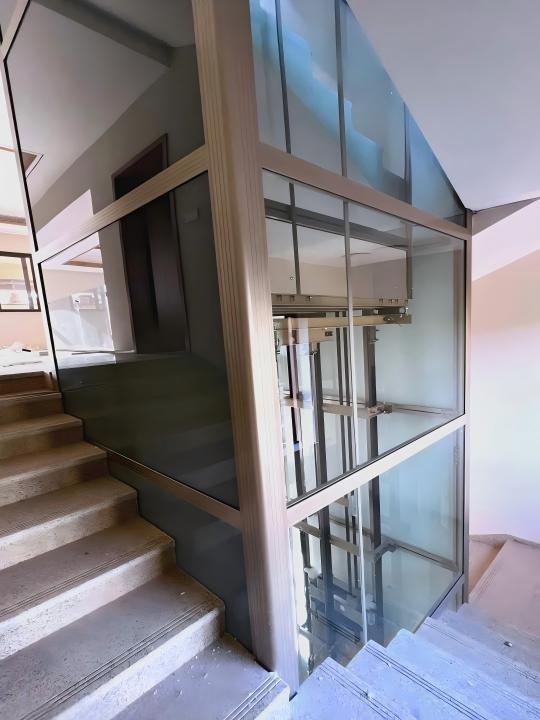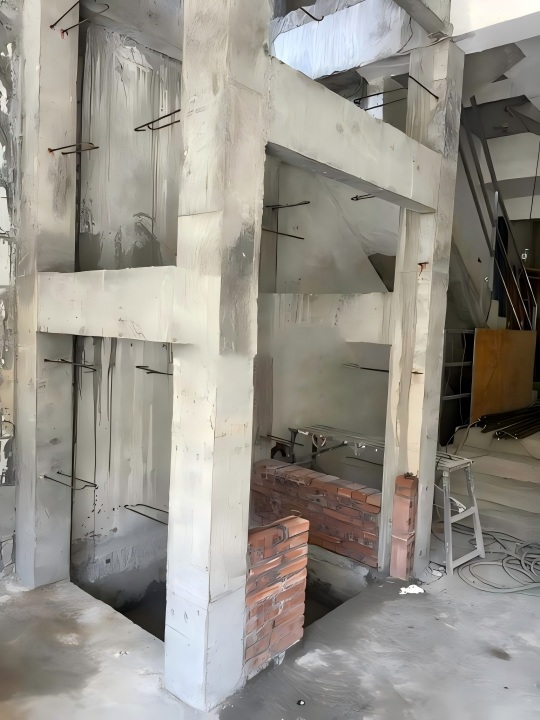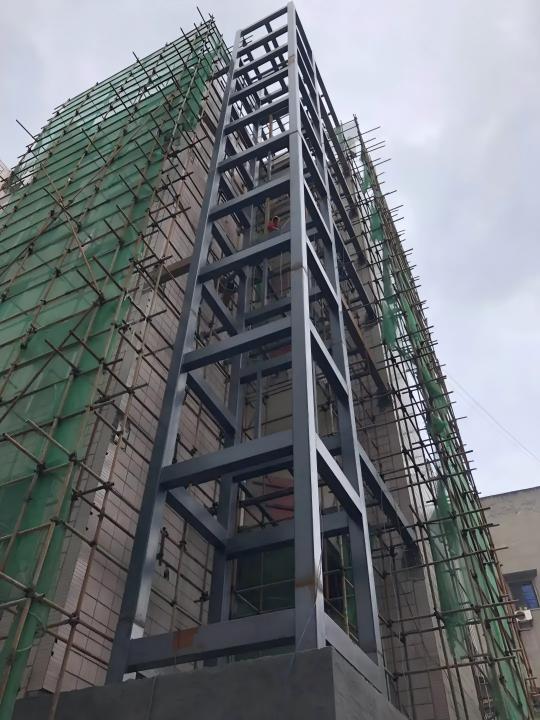Time:2025-09-18 Form:本站
Choosing the right elevator hoistway materials can make or break your project—whether you’re planning a residential elevator retrofit, a new high-rise commercial elevator installation, or an industrial upgrade. The material you pick directly impacts structural safety, project timelines, long-term elevator maintenance costs, and even corrosion resistance. To help you decide, here’s a clear breakdown of the three most common options: aluminum, concrete, and steel.
Aluminum Hoistways: Lightweight for Retrofits
Aluminum is a go-to for upgrading existing buildings or low-rise residential elevator installs, especially where foundation weight limits are strict.
Key Advantages
It’s only 1/3 the weight of steel, so no costly foundation reinforcement is needed—perfect for older residences or rooftop elevator additions. Prefabricated modules let crews assemble it in 3–5 days, minimizing disruption to occupied spaces. Most importantly, anodized or fluoropolymer-coated aluminum boasts the strongest corrosion resistance among the three materials: it stands up to saltwater, humidity, and industrial fumes (ideal for coastal regions or urban commercial areas), meaning nearly zero rust-related maintenance over its 30-year lifespan.
Limitations
It only supports elevators up to 800kg (typical 8-passenger residential models), so it’s not for heavy commercial elevator or freight use. Modular parts need exact measurements—even small deviations can’t be fixed on-site.
Budget Tier
high

Concrete Hoistways: Heavy-Duty for High-Rises
Concrete is the industry standard for new skyscrapers, malls, and hospitals, where strength and stability for high-capacity elevator systems are non-negotiable.
Key Advantages
C30-grade concrete handles elevators up to 5,000kg and works for buildings over 100 meters tall, staying stable even with frequent high-speed elevator operation. Its density cuts operating noise by 5–10dB compared to steel, and it meets global fire codes with a ≥3-hour resistance rating. In terms of corrosion resistance, solid concrete has moderate performance: it resists rust entirely (no metallic components), but porous concrete can absorb moisture and develop mold if not sealed properly—though this rarely impacts structural integrity for elevator hoistway use.
Limitations
The process—from formwork to curing—takes 20–30 days, which can delay tight elevator project schedules. Once set, modifications (like resizing for larger elevators) are nearly impossible without full demolition.
Budget Tier
Low

Steel Hoistways: Versatile Middle Ground
Steel balances aluminum’s flexibility and concrete’s strength, making it ideal for mixed-use buildings, industrial freight elevator sites, and mid-rise renovations.
Key Advantages
It fits 500–2,000kg elevators (passenger or light freight) and works for buildings up to 50 meters tall. Prefabricated parts can be trimmed on-site to adapt to unexpected constraints, like close proximity to load-bearing walls. It also accepts cladding (glass, panels, stone) to match any architectural style for commercial elevator hoistway designs.
Limitations
Steel has the weakest corrosion resistance of the three materials. In humid or corrosive environments (coastal areas, factories, or areas with road salt), uncoated steel rusts quickly—requiring rust removal and repainting every 2–3 years, adding long-term elevator maintenance costs. It also tends to resonate during operation, so extra soundproofing is often required.
Budget Tier
Medium

How to Choose
No material is “perfect”—focus on three factors for your elevator hoistway project:
Structure: Aluminum/steel for retrofits/rooftops (no foundation work); concrete for new high-rises with heavy elevator loads.
Timeline: Aluminum for fast elevator installation; concrete for large-scale builds; steel for balanced speed and adaptability.
Environment & Corrosion Needs: Aluminum for coastal/humid regions; concrete for general commercial use; steel only if regular maintenance is feasible.
For international elevator projects, check local codes (e.g., EU EN 81, US ASME A17.1) and work with certified installers. Our team can help with tailored site assessments and elevator hoistway material recommendations.
Ready to discuss your project? Contact our technical team for a free consultation on elevator hoistway materials and installation.